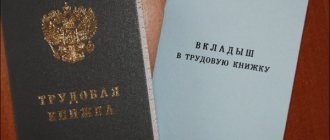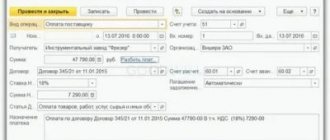Many personnel during employment are interested in the question: what rules govern the lunch break at the enterprise? This is a very important point that helps ensure that employees have free time to eat. Its absence makes one question the employer’s integrity. After all, eating is a natural need of the body. And every employee must satisfy it. But, of course, not to the detriment of work. Often the working day lasts long. Or the person stays to work overtime. He somehow needs to eat. Standards for lunch breaks in Russia are established by the Labor Code. What does it say? What key points should employees pay attention to?
Direct responsibility
The first important point is that in the Labor Code of the Russian Federation, breaks for meals are indicated as mandatory. That is, every employer is obliged to provide its employees with a certain period of time during the working day or work shift for a lunch break. Especially if we are not talking about part-time work, but about a full-time shift. Lack of time to eat is a direct violation of labor standards established by law. You cannot starve your subordinates. They have the right to complain against their employer. It is only possible to omit a meal break when the shift is approximately 4 hours long. That is, part-time. But even in this case, subordinates can legally demand a lunch break.
Lunch break for an 8-hour working day according to the Labor Code
Art. 108 of the Labor Code of the Russian Federation provides for the right to rest for all employees. It should be at least 30 minutes, but not exceed 2 hours in total. This time is not counted as work time.
Each company has the right to independently develop a schedule, which will include the time of work of an employee of a certain specialty, rest, and also reflect the interval for each of the breaks. The most common use of rest breaks is during lunch. At the discretion of the manager, he has the right to increase or reduce it.
When applying for a job, an employee must be familiar with the established labor regulations.
Separately, smoking breaks during working hours are not allocated under the Labor Code, but they have the right to spend the provided break at their own request, including on smoking breaks.
When hiring, many companies ask you to indicate bad habits in your application form, including smoking, how often and how many cigarettes a day the candidate smokes.
The company is required to create separate smoking areas for such employees. Large holdings have begun to pay more attention to this problem and are fighting in every possible way for a healthy lifestyle, motivating employees to give up the bad habit.
The Labor Code guarantees the right given to an employee to receive a lunch break.
It makes it possible to eat. The company regulations must regulate:
- duration of lunch;
- its start time;
- an indication of the place where the employee can eat, if such a possibility exists for this company.
The enterprise has no right not to allow the employee to leave its territory during this period of time. An employee is not allowed to reschedule the start of his lunch as per his convenience. If he decides to work during lunch, his manager is not obliged to give the employee additional rest time.
A normal working day is regulated by law. Despite this, some categories of employees have additional rights in this matter. When contacting management, they have the right to ask for a shortened working week or day, and they must be given this opportunity.
If a corresponding request is received from such an employee, the director is obliged to fulfill it. The following categories of employees have such rights:
- Women expecting a child.
- Those who have children under the age of 14 years.
- Persons who are responsible for caring for disabled children (if they are not older than 18 years).
- Those who care for a sick family member if they have an official medical certificate about this.
The law stipulates that wages will correspond to the actual time worked or the amount of output produced.
Employees in this situation have a legal right to use lunch. And if the employer, for some of his own reasons, does not want to provide it, they have the right to demand it.
However, if the duration of the shift does not exceed 4 hours, then rest is not permitted. The same applies to cases where part-time workers work. According to the law, their working hours cannot exceed 4 hours.
However, the employer has the right to provide such rest, although the law does not oblige him to do so.
With a 12-hour work shift, it is advisable to provide 2 rest periods - after the first 4 hours of work, and then again after the next 4 hours. Drivers who work on a schedule for more than 8 hours are allowed to rest 2 times a day, but lunch should not exceed 2 hours in total (Order of the Ministry of Transport No. 15).
- Ready-made solutions according to current legislation
- More than 3,000 completed templates
- Opportunity for expert support
The PVTR indicates that a lunch interval is not provided during a working day that does not exceed four hours. In this case, after finishing work, employees go home and have lunch there.
If the working day lasts more than 4 hours, lunch is required. However, its duration should be at least 30 minutes. Otherwise, the employer will be fined. The fine will be set under Part 1 of Article 5.27 of the Code of Administrative Offenses of the Russian Federation.
►Find out what the employer's responsibilities are to ensure safe working conditions{amp}gt;{amp}gt;{amp}gt;
In accordance with the law, the following factors can be identified that influence how much time is allowed to rest during the working day:
- if the working day (shift) exceeds 4 hours, no more than 2 hours and no less than 30 minutes are allocated for lunch, and failure to provide it in this case is prohibited;
- when working less than 4 hours a day, the employer has the right not to set a break time, otherwise it cannot be less than half an hour (clause 3 of the Letter of the Ministry of Labor of Russia dated November 17, 2017 No. 14-2/B-1012);
- if it is impossible to provide a break for certain types of work, the internal labor regulations determine their list, and employees are given the opportunity to have lunch during working hours, and the break time must be paid;
- with a shift work schedule, daily rest (between shifts) must be no less than twice as long as working hours, taking into account lunch time (Article 103 of the Labor Code of the Russian Federation);
- when the working day is divided into parts (this can occur in organizations serving the population, in the case of work in transport, etc.), between them there is usually an unpaid break of more than 2 hours or several breaks, which include a lunch break (Article 107 of the Labor Code RF); • for certain categories of workers, the duration of the lunch break and the procedure for its provision may be determined in special provisions on the specifics of working hours and rest time.
Minimum
There are certain standards regarding the length of rest and lunch breaks. They are also spelled out in the Labor Code. But we are talking exclusively about the maximum and minimum. Exact numbers must be indicated in the employment contract of each employer. It turns out that the length of time allotted for meals is the time frame that the director has the right to set independently. But taking into account the established norms for the duration of rest.
What is the minimum time allocated for a meal? At least 30 minutes is the minimum required by law in Russia in order to eat or simply relax. Setting a lunch break below the specified level is a violation of the legislation of the Russian Federation. An employment contract that specifies a period less than the established norm, as well as its complete absence, is a violation of human rights and labor rights.
Maximum
What else should you pay attention to? What important points does the Labor Code contain? A lunch break is something that every employer must provide to its employees. The minimum time allowed for a meal is 30 minutes. What about the longest prescribed duration? The maximum lunch break is fixed by law. Up to two hours are allotted for rest and eating. In practice, such a long break is rarely observed. The main thing is that this time should not be paid by the employer under any circumstances.
Without stopping from work
In some cases, the employer cannot provide employees with legal rest, which involves a break from work. In this situation, the Labor Code of the Russian Federation also provides for certain rules. It has already become clear that you cannot leave your subordinates without eating. This means that the lunch break must be provided at the expense of the work shift. The director is obliged to provide the opportunity to eat while performing his duties. For what positions is it provided? This is regulated by the employment contract concluded between the employer and the subordinate. It is there that the norms regarding breaks are indicated, as well as the places where you can eat and rest.
No strict limits
The lunch break is a value that, as already mentioned, has only maximums and minimums that are legally established. The article under study does not provide any other specifics regarding the provision of time for rest or meals. As already mentioned, each employer independently sets the length of the lunch break. These norms are prescribed in the employment contract. As a rule, in enterprises all employees are given a break at a specific time (for example, at 12:00). It can be used both for relaxation and for lunch.
In reality, 30 minutes is too short for a meal. Often employees do not have time to eat in peace. And 120 minutes is an extremely long time. Therefore, there is an unspoken norm regarding the issue being studied. Most employers set the rest break at 1 hour.
Where to relax and have lunch?
Of course, you should not in any way eat food directly at the workplace. Therefore, it is necessary to clearly designate at each enterprise an area that is intended for rest or lunch. This is quite normal. Most often, such a place is a canteen or cafe located at the corporation.
It should be noted that the lunch break is carried out exclusively in accordance with the employment contract. This means that the employer must not only allocate, but also indicate in the concluded agreement the places reserved for meals or breaks for unpaid legal rest. If there is no such point, employees can eat directly at the workplace or even leave the walls of a particular company to rest or break for lunch. Therefore, this feature should not be neglected.
Floating time - installation and features
If a person’s day does not have a standardized schedule, and lunch time is not set in strict accordance with the Labor Code or internal regulations, it should not be unused. Any employee cannot do without a break.
Sometimes workers can be distracted by duties and involved in work where it is impossible to do without them. But on the basis of Art. 101 of the Labor Code of the Russian Federation, this should be done occasionally and as necessary.
In this case, the order for the right to distract an employee must be in writing. Before approving the order, it is necessary to notify the employee of the intentions and working conditions.
A floating break schedule can be concluded personally with the employee, prescribing lunch into several parts.
The employer has the right to schedule his time minute by minute and notify his superiors about this information.
At the initiative of the employee or employer, a break may be granted for a certain period.
For example, an employer submits a petition to a trade union to appoint a floating break.
It is indicated that an employee can spend an hour on lunch during the period from 12-00 to 15-00. During this period, the employee can leave the workplace twice.
Labor Code of the Russian Federation. Article 101. Irregular working day An irregular working day is a special mode of work, according to which individual employees may, by order of the employer, if necessary, be occasionally involved in the performance of their labor functions outside the established working hours. The list of positions of employees with irregular working hours is established by a collective agreement, agreements or local regulations adopted taking into account the opinion of the representative body of employees.
We suggest you read: What period of work should you take when calculating new leave after maternity leave?
Women with babies
Women who immediately went to work immediately after giving birth require special attention. Article 108 of the Labor Code of the Russian Federation indicates that such employees should be given not only a break for eating. Up to a certain point, these personnel have every right to count on additional rest. According to the established rules, the lunch break for a woman who has children under the age of 1.5 years must last in accordance with the internal rules of the corporation. But in addition, it can be calculated for periods for feeding the baby.
They also have their limitations. The maximum is set by the employer (usually by agreement of the parties). And the minimum is 30 minutes. That is, a woman with a small child can pause to feed the baby for at least an additional half hour, not at the expense of her own meal or rest.
How often should baby time be provided? At least once every 3 hours. In fact, it is recommended to coordinate this point with the employer - all children are different. Some people want to eat after 2 hours, others can tolerate it for 4-5. Therefore, these features are discussed in advance by the parties. The lunch break should not be changed due to the need to feed a child under 1.5 years of age.
Wherever I want, I’ll go there
The time allotted for meals, as already mentioned, is not paid. It is not included in the working day. Accordingly, the Labor Code provides for some features that give freedom of action to personnel during meals. The fact is that breaks for rest and food are personal minutes (or hours) of the employee. He has the right to use them at his own discretion. For example, go home for lunch, go shopping, meet friends. The main thing is to comply with the duration restrictions. An employer cannot prohibit an employee from doing this. If a subordinate wants, he can go to a store or cafe for food during his lunch break. After all, restrictions by superiors in actions during periods that are not paid is a violation of human rights.
How to control your lunch break time
Based on Article 100 of the Labor Code, the working hours must provide for a lunch break. Article 107 notes that it is not included in the calculation of working time, but refers to rest.
Lunch break: regulation according to the Labor Code of the Russian Federation
Since lunch time cannot be considered working time, it will not be paid. On the other hand, if a violation of regulations occurred outside the territory of the enterprise, the director in this case will not punish the employee.
Sometimes it is not technically possible to provide lunch. In this situation, the employee can use his workplace.
Sometimes an employee is given rest, but he has a lot of work to do and does not use it in order to complete the assigned work on time. Thus, in fact, he turns rest into working time, increasing the latter at his own will. Does this give him the right to another time for lunch? The answer here is no.
The duration of lunch is regulated by the provisions of the Labor Code of the Russian Federation. However, it only indicates the minimum and maximum values. According to the provisions of the Labor Code of the Russian Federation, the minimum duration guaranteed by law is half an hour. The maximum limit is two hours.
The duration of the lunch break must be no less than 30 and no more than 120 minutes.
This means that the director, regardless of his desire, is obliged to provide an appropriate lunch break within the specified framework.
Although the manager is required to provide it, the time at which it begins can be any time. The law does not prevent you from setting aside morning, evening or daytime hours for this. In practice, the start of the break is most often set between noon and two o'clock in the afternoon.
The procedure for using lunch is established:
- the working time schedule established in the rules on the internal regulations of the enterprise;
- this issue can be determined in the collective agreement;
- the work schedule can be fixed in the employment contract or amendments to it;
- sometimes the director signs an order determining the distribution of working time at the enterprise.
In this case, the duration must be within the limits provided for by the Labor Code of the Russian Federation.
Lunch breaks are usually not included in employer paid time. This period is the employee's personal time. This follows from Article 108 of the Labor Code of the Russian Federation. During these intervals, the employee can remove PPE, go to the rest room or food intake room, and leave the premises and territory of the enterprise at his own discretion.
But this interval is not always excluded from payment. The employer is obliged to provide the opportunity to have lunch or dinner during working hours at those jobs where it is impossible to allocate a break for rest and food, since the technological cycle will be disrupted and this will negatively affect production as a whole. Such jobs include, for example, assembly line production in mechanical engineering or steelmaking shops. In this case, this time should be paid for, and conditions for eating should be created.
The list of such works, as well as places for eating during their implementation, must be fixed in the internal labor regulations (Part 3 of Article 108 of the Labor Code of the Russian Federation). An employee should not eat food at a machine or on a conveyor belt. The employer is obliged to equip the kitchen with a microwave oven, refrigerator, cooler, electric kettle, tables and chairs, as well as a sink with hot and cold water, and the necessary minimum of kitchen furniture for storing dishes. During lunch, the employee can take off his overalls and safety shoes in the dressing room.
These articles of the Labor Code indicate that the interval for meals and rest is indicated in the PVTR or by agreement of the parties to the employment contract. In this case, the employer must take into account the specifics of production, for example, time differences if the organization has several regional divisions, taking into account time zones. Local time must be indicated in the PVTR.
Shift work should also be taken into account. Shift production does not allow all workers to leave their workplaces at once. This will harm the flexibility, rhythm and continuity of production. Rest times should be set alternately, but taking into account that each participant in the production process should have a break after 4 hours of work.
In addition to lunch time, at certain work sites, regulated breaks are provided for workers at the expense of the employer, included in working hours. This is caused by the characteristics of production, its severity, as well as sensory loads, low and high air temperatures, noise, vibration, and other negative health indicators.
Article 109 states that those employees who work on open construction sites, in closed warehouses, hangars, etc., carry out external welding work, loading and unloading, or work in unfavorable climatic conditions, except for lunch, should be provided with rest breaks and heating.
The work of an external part-time worker may be during lunch under the main employment contract. In ch. 44 of the Labor Code of the Russian Federation does not establish any prohibitions in this regard.
A specific indication of exactly how many hours or minutes should be allocated for a break is not specified in Article 108. It is determined that “the interval for rest and eating should be no less than half an hour and no more than 2 hours.” The employer, based on these input data, sets lunch hours in its local regulations, which each employee must be familiarized with and signed when entering work.
In an eight-hour workday, it is enough to set lunch 1 hour after the first 4 hours of work. If the working day begins at 10 am and ends at 19 o'clock, then the interval for rest and eating is best done between 13.00 and 14.00. When the working day starts at 8 o'clock, the break should be set in the early lunch hours, that is, between 12.00-13.00.
The duration of the lunch break must be clearly agreed upon by the employer and the employee before the latter begins his work activity. In what form is this done? The employee must be familiar with the act, which specifies all the internal regulations. After reviewing the document, you must sign it.
Nowadays, there is a trend among organizations to install floating lunch. A floating lunch means that a time interval is specified during which the employee will be able to take a lunch break for a strictly defined time. For example, lunch from 12.00 to 15.00 lasting 1 hour. To establish such a lunch break, the employer must comply with the following requirements:
- The lunch break should not be less than 30 minutes;
- Lunch should not be more than 2 hours;
- The break should be during the day, not at the beginning or end;
- Lunch times should be specified in the internal rules. Employees must be familiarized with this.
Even if the company has a clearly defined lunch time, the employee has every right, in agreement with the manager, to set a flexible lunch for himself. To do this, the employee must write a statement. And the employer must enter into an additional agreement with the employee on an individual lunch break schedule. In some cases, employers are required to indicate serious reasons for rescheduling lunch. Although this is not stipulated by law.
So, lunch breaks are set differently at different enterprises. It can also be installed individually at the will of the employee.
Lunch break is personal time
The lunch break is each employee’s personal time, so he has every right to do whatever he wants. For example, go to a cafe, to the clinic, shopping, read, sleep. It is important to know that the employer does not have the right to prohibit leaving the workplace during lunch. The main thing is that the employee manages to meet the break time frame.
There are enterprises where employees are forced to have lunch at their workplaces. In this case, the employer is obliged to provide all conditions so that the employee can eat in peace and rest for the time allotted to him. For example, some organizations have designated areas for eating.
An employee can do his immediate work during lunch. There are a number of nuances here. If the employee does this on his own initiative, the work will not be paid. If at the initiative of the employer, then the work must be paid. In the second case, the employee’s written consent is required. Almost all categories of citizens can be involved in overtime work, except for pregnant women and minors, as well as those who have not given their written consent.
We invite you to read: Is the day of dismissal considered a working day?
Vacation outside the company
The lunch break is not necessarily the time at which food is eaten. The fact is that since these periods are not paid, the Labor Code of the Russian Federation provides for the free use of these periods of time by employees. They can not only eat, but also rest. Moreover, no one has the right to force a subordinate to remain within the company. Breaks for rest or lunch are the personal time of every citizen. And he has the right to dispose of it as he wishes.
The only thing the subordinate must take into account is the following point: if no meal was taken during the established lunch break, there will be no additional break for eating. The employer, at his discretion, can make concessions to the employee, but this is an extremely rare occurrence. You shouldn't rely on it.
Postponement of holiday
According to the law, it is strictly forbidden to transfer rest time to the end or beginning of the working day or to exclude it altogether for any person.
However, staff have the right to reschedule lunch at their discretion to another hour, no earlier than two hours after the start of the working day, and no later than two hours before the end of the working day.
To do this, you must fill out an application addressed to the director.
The application must contain a heading in whose name it is being filled out. Next, indicate your personal information and position. The text of the application should indicate the desired period for providing rest.
Let us remind you that rest for meals is provided for by the legislation of the Russian Federation. Its exact beginning and end are determined by the head of the company by internal act.
Since this time is not working time, the employee can dispose of this break at his own discretion:
- go to lunch;
- go home;
- meet friends, etc.
It happens that an employee, due to the nature of his work, does not have the opportunity to have lunch at the allotted time. In such a situation, the employee has lunch during any other free time, this rest is credited to him and is subject to payment.
The legislator has established different labor regimes in regulations; also, the head of the company can approve several more options, depending on the category of employees.
Another feature is provided; it is as follows: the manager approves only the total time of the break, without indicating its beginning or end. The worker uses it at his own discretion, whether he spends it at once, divides it into several short periods, or maybe even uses this time for work activities.
We suggest you read: What to do if you have a loan debt from bailiffs
Changing breaks
Another important point is that the lunch break is a clearly defined period of time. It must be installed and approved by the employer. It is important. Some people are interested in whether it is possible to independently move lunch time to a particular hour. The answer is simple - no. You can try to negotiate with the employer, but nothing more. On an ongoing basis, no one will reschedule the time allocated for rest and meals for a specific employee. You cannot reschedule breaks on your own initiative. Therefore, if an employer offers lunch from 12:00 to 13:00, for example, then you need to eat during this period of time. After all, no more breaks will be provided.
Work in transport
Often, employees have to work in transport or constantly be absent from their main workplace in order to fully perform their job duties. That is, people have specific work schedules. How to deal with lunch breaks in this situation? The employer must issue a special decree that will spell out all the nuances of the time provided to employees working in transport or constantly traveling for lunch and rest. Such documentation is called a provision on providing breaks to personnel with special working conditions.
Often, employees set aside time for lunch on their own without notifying the employer. That is, while, for example, they get to the meeting place. According to the established rules, this cannot be done. But unspoken norms provide for such a step. But this does not exempt the employer from providing an official meal break. He still must set aside a certain period for lunch. Otherwise, his subordinates can legally complain about him.
When not to take a break
The law does not always consider that a lunch break is mandatory. In some cases, the employer has the legal right not to provide it.
The basis for this decision is the type of work performed by the employees. In some cases, they are continuous, without the possibility of interrupting them for lunch. This usually occurs when there is a need to continuously provide customer service or when it comes to continuous production.
On the one hand, an employee without rest is obliged to work all working hours. At the same time, on the other hand, he needs a break, which he cannot demand from his manager.
In the absence of such efforts, there is a reason to file a complaint with the Labor Inspectorate. This will result in verification and appropriate action being taken. Presumably, the directors will be required to create the necessary opportunities for organizing a break or change the working conditions of employees so that they do not exclude the possibility of providing a break.
He may be fined under Article 5.27 of the Code of Administrative Offenses for violating the provisions of labor legislation.
If a company employs remote employees, there is no way to regulate the provision of breaks to them. The legislation gives them the opportunity to organize their work independently.
Summarizing
What conclusions can be drawn from all of the above? A lunch break is a legal time that must be allocated by the employer for rest and meals to all employees. Its minimum duration is 30 minutes, maximum - 120. In fact, it is practiced to establish an hour-long lunch break.
The studied period of time is allocated by the employer in accordance with the employment contract and the internal regulations of the enterprise. Only the boss can carry it. Employees do not have any right to arbitrarily change their rest and lunch times. It is illegal. Women with small children may require additional breaks to breastfeed. Not the most common practice, but it does happen. The employer cannot refuse this. The lunch break should not be reduced. It is provided to female employees on the same terms as to all other subordinates.
Each subordinate has the right to freely manage the time allocated for rest or lunch. You should pay attention to the fact that you can leave the walls of the company. No one can restrict an employee in this regard. After all, the employer does not pay for periods of rest and meals. This means that he cannot claim personal time for his subordinates to rest.
How to control your lunch break time
The lunch break is each person’s personal time, and no one has the right to control it.
If an employee is at the workplace during a break, he is required to obey local regulations, which provide the same rules as responsibilities at the workplace.
Labor Code of the Russian Federation. Article 106. The concept of rest time Rest time is the time during which the employee is free from performing work duties and which he can use at his own discretion.
If an employee has the right to leave the workplace, he can work part-time in his free time for another organization. This cannot be prevented unless otherwise provided in the employment contract.
In the event that the mode is set to art. 91 of the Labor Code of the Russian Federation and the staff violates it, several rules can be established. Most often, an electronic exit-entry system is used for workers who smoke. If they go out for a smoke break during working hours, you can count how many times this happens, and ultimately calculate the working time spent on a cigarette break.
This process is handled by the HR department. If there are video surveillance systems confirming this fact, there will already be grounds for imposing fines, reducing wages or dismissal.
Labor Code of the Russian Federation. Article 91. Concept of working time. Normal working hours Working hours - the time during which the employee, in accordance with the internal labor regulations and the terms of the employment contract, must perform labor duties, as well as other periods of time that are in accordance with this Code, other federal laws and other regulatory legal acts Russian Federation refer to working time.
Normal working hours cannot exceed 40 hours per week.
The procedure for calculating the norm of working time for certain calendar periods (month, quarter, year), depending on the established duration of working time per week, is determined by the federal executive body exercising the functions of developing state policy and legal regulation in the field of labor.
The employer is required to keep records of the time actually worked by each employee.
How are lunch times controlled?
But there is also a disadvantage to electronic keys. In an individual case, there may be a good reason why the employee was late from lunch. You can explain this to your colleague, but hardly to a soulless electronic device.
Thus, employers always control the lunch break; the only difference is in the methods of control and vigilance. What other work breaks exist besides lunch breaks?
The lunch break is not paid by the employer. But there are breaks that the employer is obliged not only to provide to employees, but also to pay for them:
- Warm up break. This rule applies to those who are at sub-zero temperatures outdoors or in an unheated room. An employee has the right to smoke and drink tea during a break, and this time will be paid for by the employer.
- Take a break while working at the computer. When constantly working at a computer, an employee has the right to be distracted for 15 minutes. The computer's eyes get tired, and the employee needs to give them a rest. This break is also paid, regardless of what exactly the employee was doing at that time.
- Break for feeding the baby. At the request of a woman who is the mother of a child under one and a half years old, breaks of at least 30 minutes every 3 hours are provided to feed the child. This break may be longer, depending on the number of children in the family. Labor protection for women with children is under the control of government agencies, so employers try not to violate the rights of this category of citizens. Breaks for women are also paid. In a word, according to the law, the employer is obliged to provide extra-hour breaks to those employees whose health status depends on the break or their loved ones (children).
As a result, it is worth repeating the rules that the employer has no right to violate under any circumstances:
- It is impossible to cancel a lunch break, even if the employee himself requests it.
- Lunch cannot be moved to the morning or evening.
- An employee cannot be prohibited from leaving his workplace during lunch. Otherwise, this time must be paid to the employee as working time.
Compliance with all these rules is constantly monitored by supervisory authorities. If the employer violates the rules, the employee has the right to seek protection from the Labor Inspectorate of the Russian Federation.
Employers, as a rule, regulate violations by employees independently, without the intervention of third parties.
Noticed a mistake? Select it and press Ctrl Enter to let us know.







